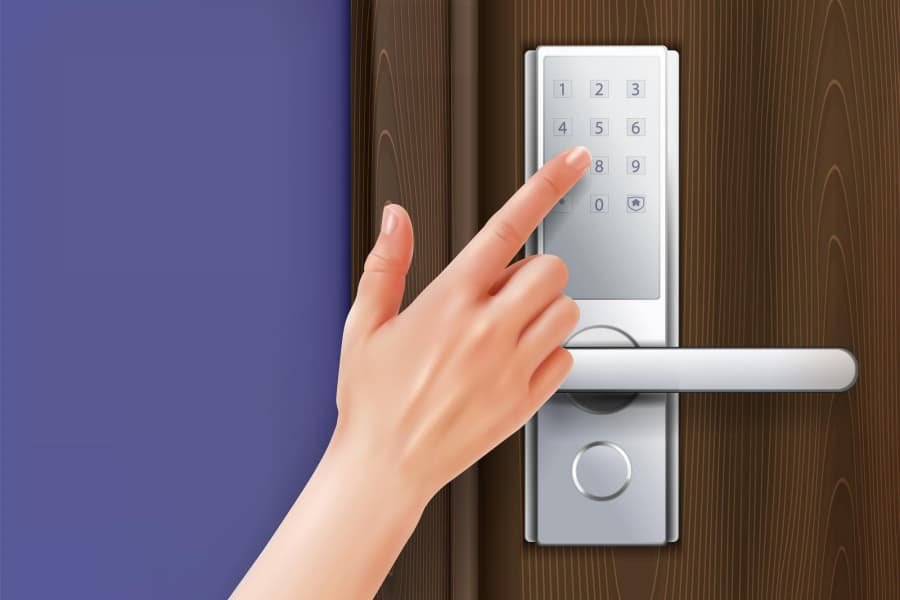Mortise locks are considered among the most secure and durable door locks. They are commonly found and used in residential and commercial buildings because they boast high strength, customization options, and good visual appeal.
Mortise locks are unique because they are installed properly inside the door’s edge rather than on the edge of the door’s surface. The design included this invention to improve the lock’s durability and increase protection.
A pocket is a mortise cut out in the door that holds the installed inside the lock body. With this, the latch bolt, deadbolt, and other features will fit in place naturally, giving you functionality as well as looks.
What is a Mortise Lock?
A mortise lock is a type of door lock that protects a latch and deadbolt in one unit. To install it, the door must be pocket cut or mortise-cut along the edge.
Mortise locksets offer greater security and privacy than alternative door locks because their interior and external trim elements are unnoticeable to people. Mortise cylinder locks are the best protection for any home or business.
How Does a Mortise Lock Work?

A mortise lock has an exact cutting-refined locking mechanism. It is a key or skeleton key activated by turning, which releases the latch or dead bolt, as appropriate, to lock or unlock the door. Secure operations are accomplished by precisely cutting the keyed cylinder lock chassis.
Mortise Lock Key Components
- Lock Body: Home for the internal mechanisms.
- Strike Plate: It is attached to the door jamb and takes the bolt when locked.
- Lock Trim: External parts like handles and knobs.
- Latch Bolt: Keeps the door safe when closed.
Types of Mortise Locks
Different types of mortise door locks are designed to meet different security and functional needs. The cylinder locking mechanism, and the locking feature lead to two primary differences.
Single Cylinder vs. Double Cylinder Mortise Locks
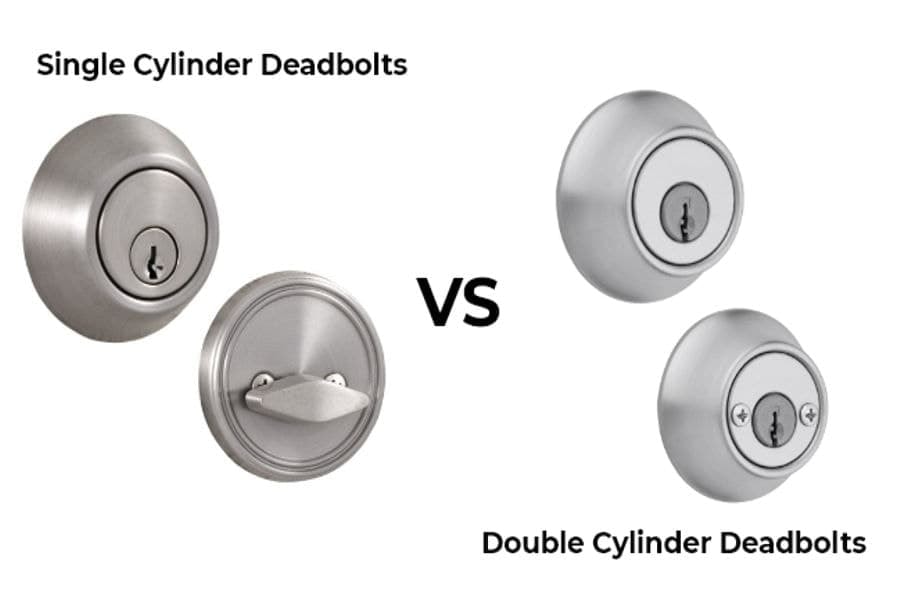
- Single-Cylinder Mortise Locks: Single-cylinder locks are convenient to operate with a key inserted from the outside and a thumb turn on the inside. For interior or external doors within homes, ease of access is highlighted.
- Double Cylinder Mortise Locks: These double-barreled locks make them twice as secure. They are ideal for commercial buildings or areas where access control must be granted and the susceptibility to tampering reduced. However, they are unsuitable for emergency exits since they depend on keys.
Lever Handle Mortise Locks vs. Deadbolt Mortise Locks

- Lever Handle Mortise Locks: These locks come with a lever for easy use to be featured in high-traffic areas such as offices and retail spaces. Its design is very user-friendly, which helps with convenience.
- Deadbolt Mortise Locks: Some of the best locking systems known for extra layers of security are employed frequently with heavy-duty deadbolts, making them suitable for external doors where strength and durability are significant concerns.
Philips Smart Locks Manufacturer is the best provider of high-quality solutions enhanced security and a range of mortise locks for residential and commercial use.
What are the Benefits of Using Mortise Door Locks?
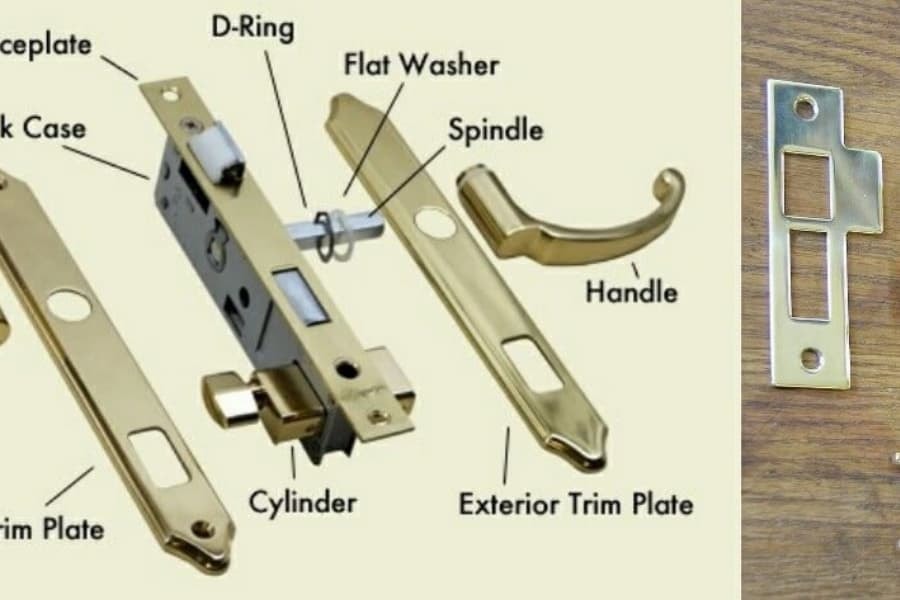
The benefits of using mortise locks on double doors include security, long-lasting design, and ease of use, which makes mortise locks used on many doors. Below are the key advantages:
- Enhanced Security: It has strong protection, robust internal mechanisms, and a secure fit.
- Durability: Designed to withstand heavy use, it lasts and requires minimum maintenance for years.
- Versatility: Works on all types of doors, from internal to external.
- Aesthetic Appeal: A perfect blend of sleek design matches any door style.
Ideal Scenarios for Mortise Lock Installation
- External doors: Which need advanced security features.
- Interior doors: High-traffic areas that have high demand for locking systems.
- Double doors: A priority where symmetry and strength are in place.
How to Install a Mortise Lock?
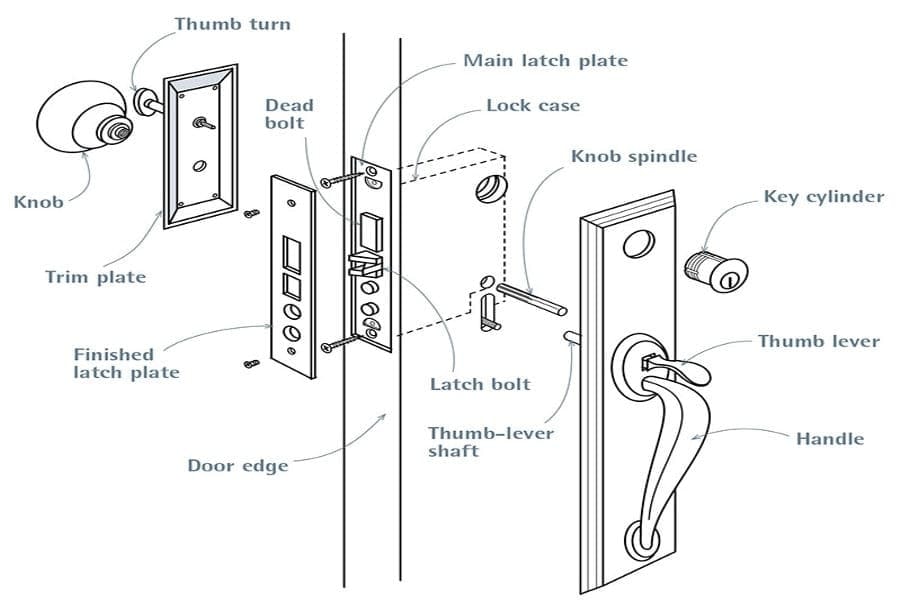
Mortise lock installation requires preparation and the right tools. Follow these steps for a successful installation:
Measure the Door’s Edge
First, you measure the door knob’s edge to ensure the lock fits. Thus, problems occur later during the subsequent installation.
Create the Mortise Pocket
With a chisel and drill, cut the mortise pocket out. Cut into the edge precisely so the lock body sits right and makes mortise locks.
Fit and Secure the Lock Body
Fit the lock body in the mortise cut-out to the door’s edge correctly. Clip it in place to the lock trim and let it go a bit unstable.
Attach the External Trim
Install the door knob or handle on the edge of the door exterior if possible; you want everything to be in place with no gaps so it’s nice and smooth to operate.
Test the Lock
Ensure the lock works by checking that the latch and deadbolt are both appropriately, installed properly and aligned correctly on the strike plate.
Tools Required:
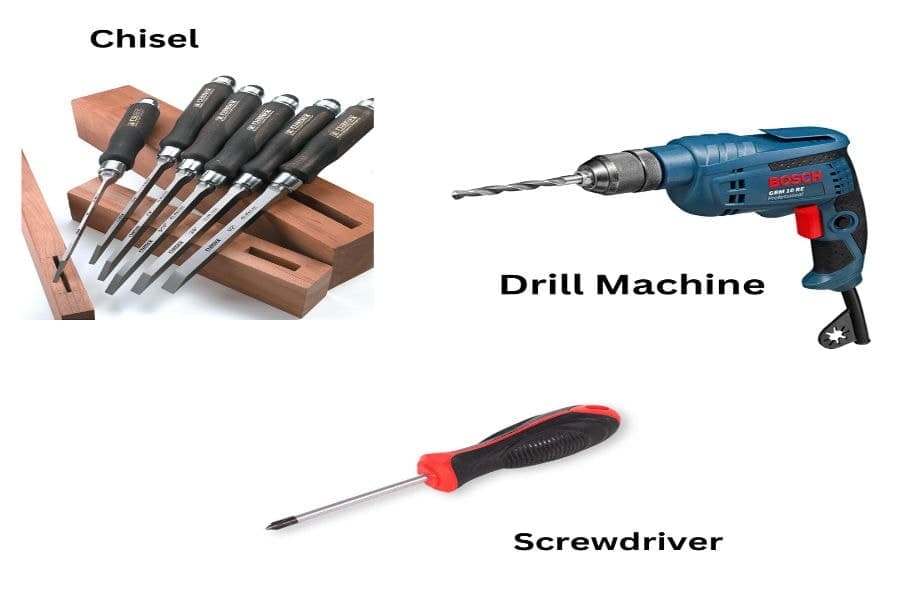
- Chisel for accurate cutting.
- A drill is used to create the mortise pocket cut.
- Assembling components with a screwdriver.
Installation and simple operation of the correct equipment help the lock provide the highest level of security protection and work properly.
Maintenance and Troubleshooting of Mortise Locks
- Wipes clean the lock chassis a few times weekly and lubes the internal mechanisms.
- Examine the wear and tear on the strike plate and lock trim.
- Make sure any loose screws are tightened.
Common Issues and How to Fix Them
- Misaligned Latch Bolt: Change the door jamb’s strike plate.
- Stiff Mechanism: Key the cylinder and apply a silicone-based lubricant to the keyed cylinder.
- Loose Lock Body: The lock is placed into the mortise pocket.
Choosing the Right Mortise Lock for Your Property
You select the right mortise lock depending on your security needs and the door type. When protecting external doors, lock with a solid dead bolt and a heavy-duty lock. For interior doors, a single-cylinder lock may be preferable. Make sure the lock fits the same dimensions as your door’s edge.
High-quality mortise locksets produced by reliable brands ensure durability and performance. Philips Smart Lock Manufacturer does this within its countries of operation by selling locks with the latest features.
Final Thoughts

Mortise locks are solid lock types with style, durability, and high security. Their robust design and advanced locking mechanisms provide excellent protection and long-term reliability.
Philips Smart Lock is just such a lock brand. You can choose it with confidence, and the result will be excellent protection and performance.

